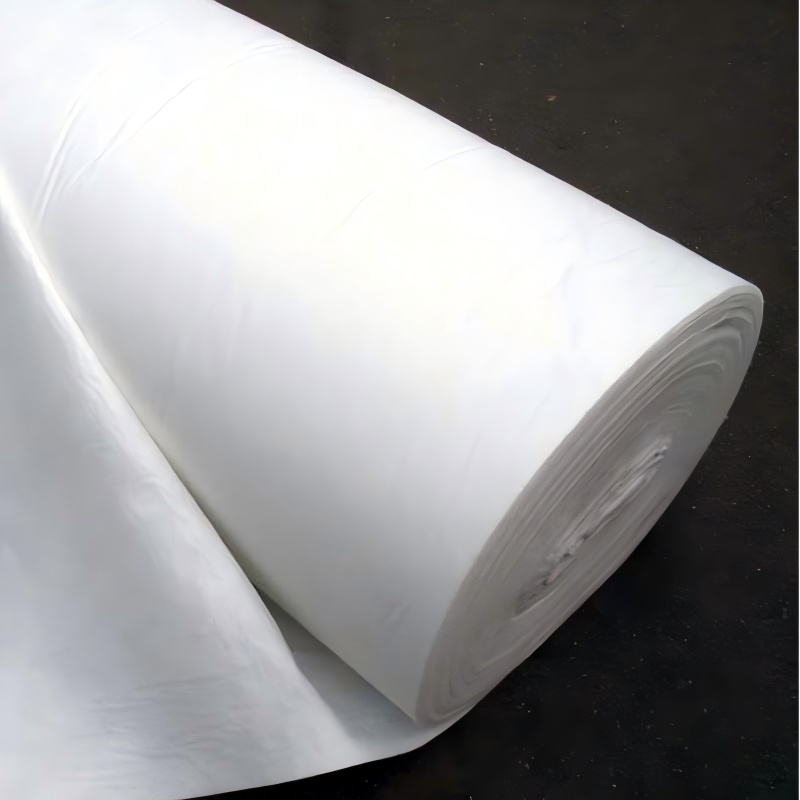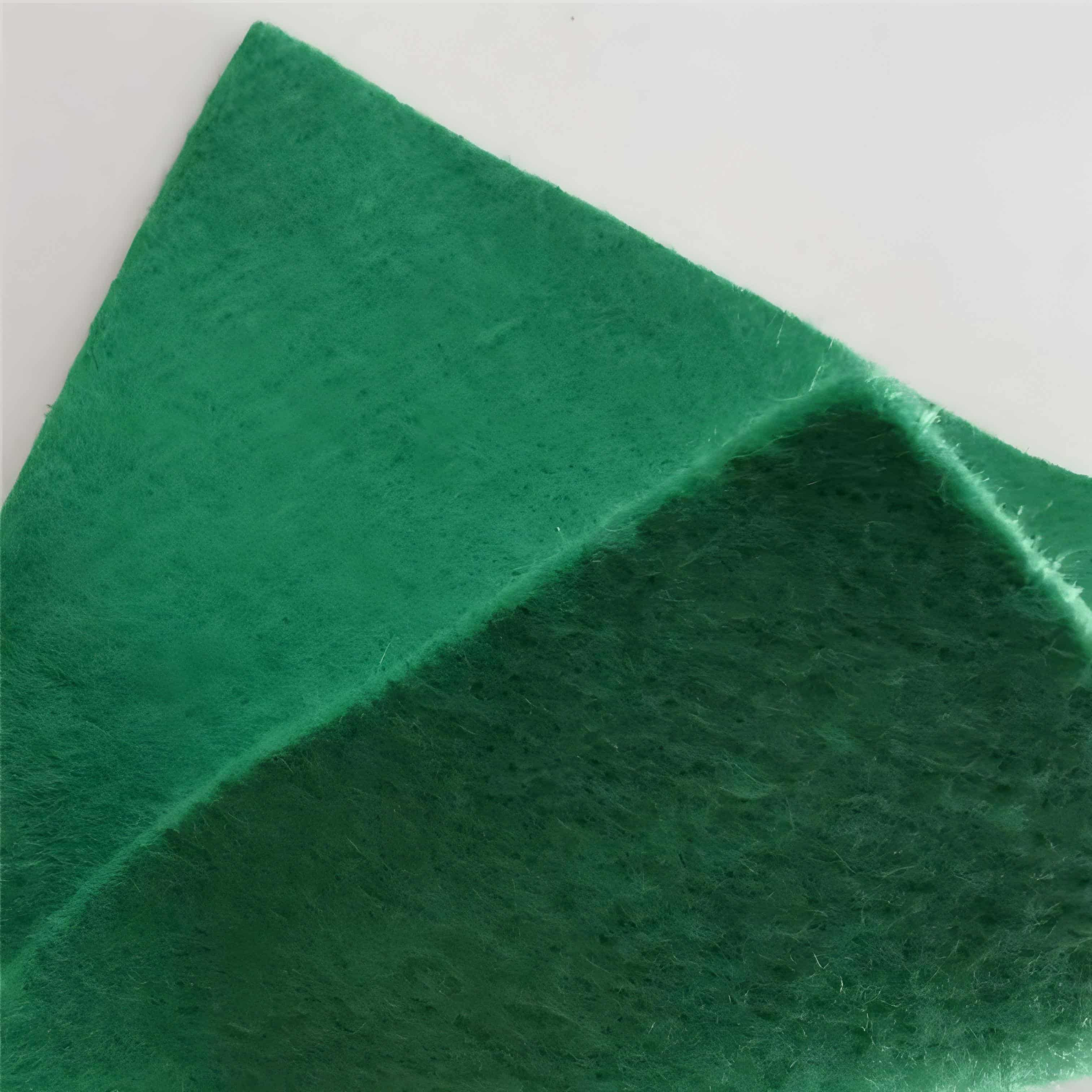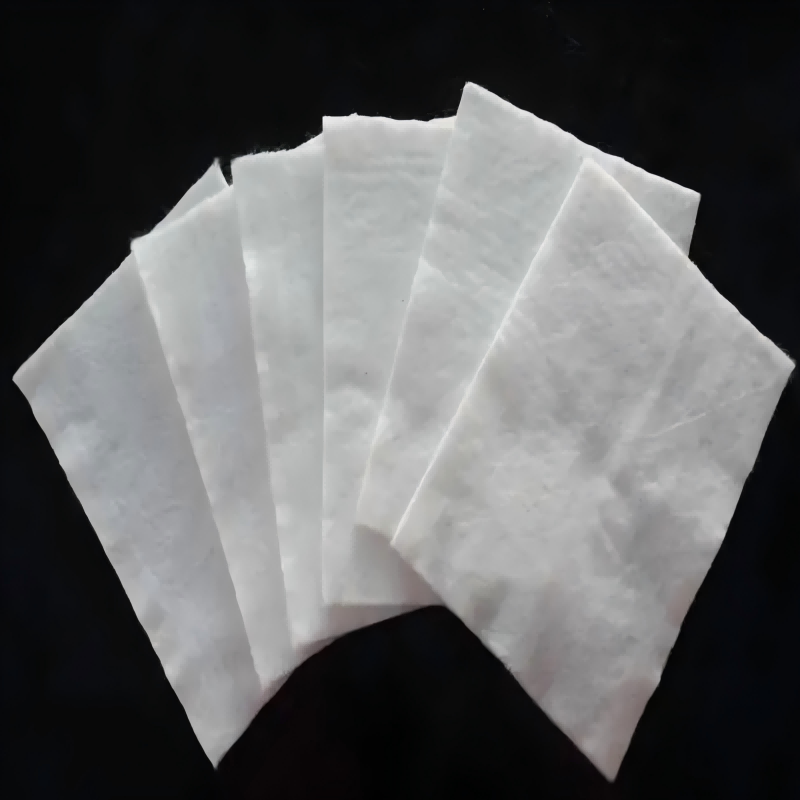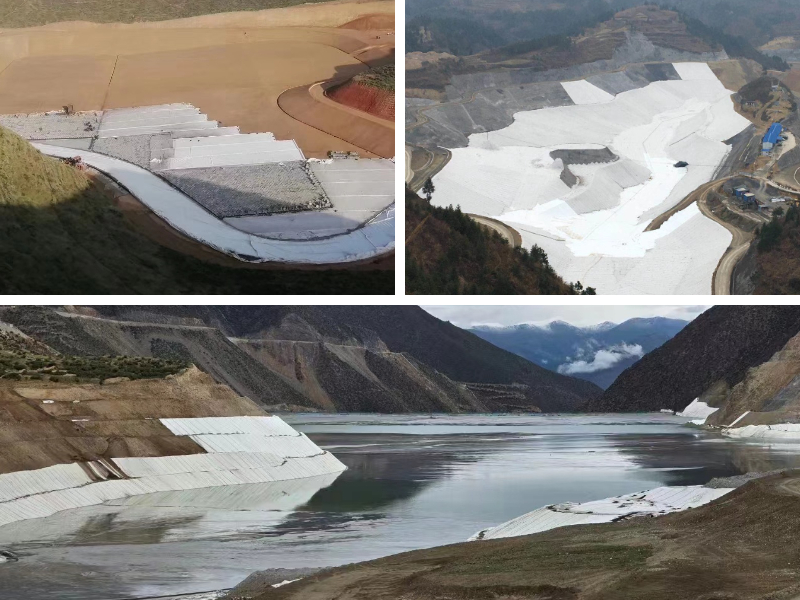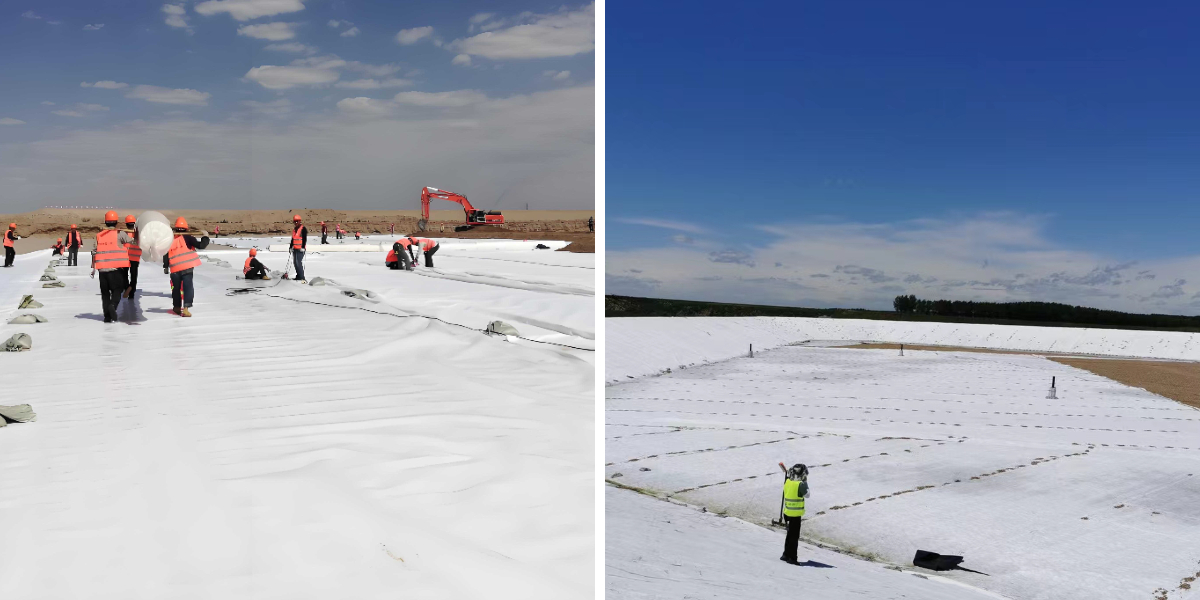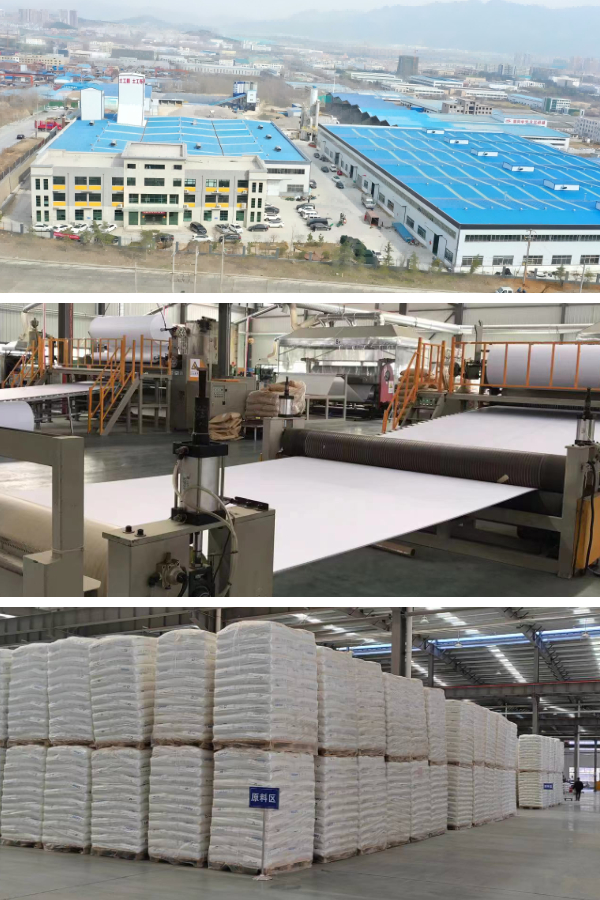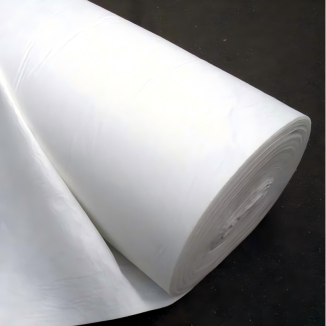Geotextile Separation Fabric
1. Precise isolation: prevent the mixing of different graded soil/sand and gravel, maintain the independence of the structural layer, and avoid the failure of the project due to material mixing
2. Weather resistance and damage resistance: resistant to acid and alkali, wear-resistant, suitable for complex soil and climate, and not easily damaged or deformed after long-term use
3. Strong adaptability: Flexible and adaptable to undulating base layers, compatible with multiple scenarios such as roadbeds and dams, without isolation blind spots
4. worry free construction: easy to cut quality, no need for professional equipment, fast laying, reducing labor and time costs of the project
Products Introduction:
Geotextile Separation Fabric is a functional geosynthetic material designed specifically to solve the problem of "mixing of different material layers" in civil engineering. It is made from polypropylene (PP) and polyester (PET) as the core raw materials, and is made through weaving, needle punching, non-woven or composite processes. Its core function focuses on "physical isolation" - establishing barriers between different material layers with different properties such as soil, sand and gravel, roadbed, and cushion layer, preventing particle migration and mixing between layers, and maintaining the independent performance and design strength of each structural layer.
Different from ordinary geotextiles that focus on filtration and drainage, geotextile isolation cloth emphasizes more on "isolation accuracy" and "structural stability". By accurately controlling the pore size and optimizing the fiber density, it ensures that the normal flow of interlayer moisture is not affected while preventing the infiltration of fine particles (some models also have filtration and drainage functions). It is widely used in projects that require high interlayer cleanliness, such as roads, airports, dams, and building foundations. It is a key material to ensure long-term structural stability and extend the service life of the project.
Product Features:
1. Precise isolation to prevent interlayer mixing
By using specific processes to control the pores of the fabric (with a pore size of 0.02-0.1mm), the interception rate of fine soil particles and sand and gravel micro materials is ≥ 98%, which can effectively prevent the migration and mixing of weak soil and silt particles from the lower layer into the upper layer of sand and gravel cushion or roadbed, and prevent the upper layer of coarse aggregate from being embedded into the lower layer of soft soil, avoiding the decrease in structural layer strength and insufficient bearing capacity caused by material mixing. For example, in highway subgrade construction, it is necessary to strictly separate the subgrade soil from the graded sand layer to ensure that the drainage and load-bearing performance of the sand layer are not affected.
2. High strength tensile resistance, resistance to rolling and wear
Machine woven isolation fabric has a longitudinal and transverse breaking strength of ≥ 25kN/m, while needle punched non-woven fabric has a breaking strength of ≥ 15kN/m. It has excellent tear resistance and can withstand long-term rolling and friction from heavy-duty rollers and construction vehicles. It is not easily damaged during construction and use; At the same time, it has stable creep resistance and will not undergo significant deformation under long-term structural loads, ensuring the integrity of the isolation barrier and adapting to high-intensity use scenarios such as airport runways and heavy-duty highways.
3. Maintain permeable soil and balance drainage needs
Most models have dual functions of "isolation+drainage", with small but interconnected pores and a vertical permeability coefficient of ≥ 1 × 10 ⁻ cm/s. This allows for normal infiltration and drainage of interlayer moisture (such as rainwater and groundwater), avoiding soil softening and structural instability caused by water retention. For example, laying between the dam cushion layer and the soil can not only isolate different materials, but also guide the accumulated water in the cushion layer and reduce the pore water pressure of the dam body.
4. Weather resistant and corrosion-resistant, suitable for complex environments
The raw materials have undergone anti UV, anti acid and alkali, and anti microbial treatment, and can be stably used in extreme temperature environments ranging from -30 ℃ to 80 ℃, resisting erosion from saline alkali soil, groundwater, and microbial decomposition; The service life can reach 10-15 years in wet environments such as wetlands and coastal mudflat, and can be extended to more than 20 years in ordinary soil environments, reducing the cost of later maintenance and replacement.
5. Easy to install and compatible with various working conditions
The texture is flexible (thickness 1-3mm), which can fit the uneven surface of the base layer (such as roadbed depressions and embankment slopes) without blind spots for laying; Lightweight (100-300g/m ²), easy to cut, no need for large equipment, manual labor or small machinery to quickly lay, and compatible with subsequent construction processes such as asphalt paving and concrete pouring, without affecting project progress, suitable for tight schedule scenarios such as roads and building foundations.
Product Parameters:
project | metric | ||||||||||
Nominal strength/(kN/m) | |||||||||||
6 | 9 | 12 | 18 | 24 | 30 | 36 | 48 | 54 | |||
1 | Longitudinal and transverse tensile strength / (kN/m) ≥ | 6 | 9 | 12 | 18 | 24 | 30 | 36 | 48 | 54 | |
2 | Maximum elongation at maximum load in longitudinal and transverse directions/% | 30~80 | |||||||||
3 | CBR top penetration strength /kN ≥ | 0.9 | 1.6 | 1.9 | 2.9 | 3.9 | 5.3 | 6.4 | 7.9 | 8.5 | |
4 | Longitudinal and transverse tearing strength /kN | 0.15 | 0.22 | 0.29 | 0.43 | 0.57 | 0.71 | 0.83 | 1.1 | 1.25 | |
5 | Equivalent aperture O.90(O95)/mm | 0.05~0.30 | |||||||||
6 | Vertical permeability coefficient/(cm/s) | K× (10-¹~10-), where K=1.0~9.9 | |||||||||
7 | Width deviation rate /% ≥ | -0.5 | |||||||||
8 | Unit area mass deviation rate /% ≥ | -5 | |||||||||
9 | Thickness deviation rate /% ≥ | -10 | |||||||||
10 | Thickness coefficient of variation (CV)/% ≤ | 10 | |||||||||
11 | Dynamic perforation | Puncture hole diameter/mm ≤ | 37 | 33 | 27 | 20 | 17 | 14 | 11 | 9 | 7 |
12 | Longitudinal and transverse fracture strength (grab method)/kN ≥ | 0.3 | 0.5 | 0.7 | 1.1 | 1.4 | 1.9 | 2.4 | 3 | 3.5 | |
13 | Ultraviolet resistance (Xenon arc lamp method) | Longitudinal and transverse strength retention rate% ≥ | 70 | ||||||||
14 | Ultraviolet resistance (fluorescence UV lamp method) | Longitudinal and transverse strength retention rate% ≥ | 80 | ||||||||
Product Applications:
1. Transportation infrastructure engineering
Highway/railway subgrade isolation: It is laid between the subgrade soil and the graded crushed stone cushion layer to prevent fine soil from mixing into the crushed stone layer, avoid pore blockage and drainage failure of the crushed stone layer, and prevent crushed stone from embedding into the soft soil of the subgrade, ensuring the overall bearing capacity of the subgrade, reducing pavement settlement and cracking, and adapting to projects such as highways and heavy-duty railways.
Airport runway base protection: It is laid between the concrete base layer and the gravel cushion layer of the runway, isolating different material layers to prevent the migration of fine particles from causing a decrease in the flatness of the base layer. At the same time, the accumulated water in the base layer is drained to avoid cracks in the concrete due to water erosion, ensuring the long-term safe use of the runway.
2. Water conservancy and dam engineering
Dam cushion isolation: used between the clay core wall of the dam and the sand and gravel filter layer to prevent clay particles from mixing into the sand layer and ensure the filtering function of the filter layer; Simultaneously isolate the sand layer from the soil of the dam body, avoid soil particle loss, enhance the stability of the dam body, and adapt to small and medium-sized reservoir embankments, river flood control embankments, and other projects.
Channel and reservoir slope protection: It is laid between the concrete slope protection of the channel and the soil base to isolate the concrete from the soil, prevent soil frost heave from causing slope protection cracking, and at the same time, divert water seepage from the base to reduce channel leakage losses and ensure water delivery efficiency.
3. Construction and Municipal Engineering
Building foundation treatment: Lay between the building foundation cushion layer (such as sand and gravel cushion layer) and the foundation soil to prevent soil particles from mixing into the cushion layer, maintain the bearing and drainage performance of the cushion layer, avoid uneven settlement of the foundation causing cracking of the building wall, and be suitable for residential, commercial and other projects.
Municipal Square/Parking Lot Ground: It is laid between the concrete or asphalt layer and the gravel base layer to isolate different materials, prevent the fine soil of the base layer from blocking the pores of the surface layer, and reduce the cracks caused by the deformation of the base layer, thus extending the service life of the ground.
4. Port and airport engineering
Port yard foundation: Lay between the gravel cushion layer and the backfill soil foundation to prevent fine particles in the backfill soil from migrating upwards, ensure the load-bearing and drainage capacity of the cushion layer, avoid ground settlement of the yard, and adapt to heavy-duty scenarios such as container yards and bulk cargo yards.
Airport apron base layer: It is laid between the asphalt base layer and the gravel cushion layer on the apron to isolate the material layer and prevent the mixing of fine particles from causing a decrease in the strength of the base layer. At the same time, it is used to divert accumulated water and avoid damage to the base layer caused by aircraft takeoff and landing loads.
5. Agriculture and Ecological Engineering
Isolation of Irrigation Channels in Farmland: Lay stone masonry slope protection between the channel and the soil to prevent soil particles from mixing into the channel, reduce channel siltation, and protect the slope protection from soil frost heave damage, ensuring the efficiency of irrigation water transportation and adapting to large-scale agricultural water conservancy projects.
Ecological slope restoration: Lay between the vegetation planting layer and the soil base layer on the slope, isolate the planting soil from the base soil, prevent soil loss, and allow water infiltration to provide a stable environment for vegetation growth, suitable for ecological projects such as highway slopes and mine greening.
Geotextile Separation Fabric, with its core advantages of "precise isolation and anti mixing, high-strength resistance to damage, retention of permeable soil, and easy adaptation for laying", accurately solves the core pain points of "material interlayer pollution and structural strength decline" in civil engineering, and is an "invisible barrier" to ensure long-term stability of the project. Whether it is roadbed protection in transportation engineering, dam reinforcement in water conservancy engineering, or foundation treatment in construction projects, reliable isolation performance can maintain the independent function of each structural layer and extend the service life of the project.
Compared to traditional isolation methods such as sand and gravel isolation layers, geotextile isolation cloth has significant advantages of "low cost, fast construction, and long-lasting effect" - it reduces the amount of sand and gravel materials used, shortens the construction period, and avoids the problem of traditional isolation layers being prone to failure. Its wide application not only promotes the development of engineering construction towards higher efficiency and durability, but also provides important support for reducing long-term maintenance costs and ensuring engineering safety. It is an indispensable basic protective material in modern civil engineering.


